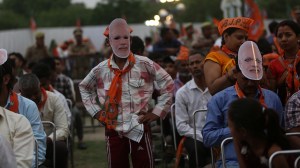- India
- International
With a 41% shortfall in rain, sowing of kharif crops takes a hit in Maharashtra
The 41.4 per cent deficient rainfall in the state during the current southwest monsoon season (till June 23) is in contrast to the 82.5 per cent surplus in Assam—where the ruling Shiv Sena’s rebel MLAs are holed up.
 At 89 mm, cumulative rainfall so far in this region has been 10.4 per cent below the normal historical average of 99.3 mm for this period. (Representational)
At 89 mm, cumulative rainfall so far in this region has been 10.4 per cent below the normal historical average of 99.3 mm for this period. (Representational)It is not just political uncertainty that Maharashtra is facing. The lack of rain in the state has meant that there has hardly been any sowing of kharif crops.
The 41.4 per cent deficient rainfall in the state during the current southwest monsoon season (till June 23) is in contrast to the 82.5 per cent surplus in Assam—where the ruling Shiv Sena’s rebel MLAs are holed up.
The monsoon technically entered Maharashtra on June 10 and had covered the entire state by Thursday. The rain, however, has been scanty overall, with only scattered showers. Most farmers have, therefore, refrained from taking up sowing. The main worry is over kharif pulses, particularly moong (green gram) and urad (black gram), whose window seems to be closing.
“I normally grow moong and urad on around two acres each, the sowing for which has to be completed by the month-end. This time, I have decided to skip these two crops and, instead, plant cotton on 12 acres and soyabean on my remaining four acres,” said Manik Kadam, a farmer from Arvi village in Marathwada district’s Parbhani taluka.
🚨 Limited Time Offer | Express Premium with ad-lite for just Rs 2/ day 👉🏽 Click here to subscribe 🚨

At 89 mm, cumulative rainfall so far in this region has been 10.4 per cent below the normal historical average of 99.3 mm for this period. The deficiency has been even higher at 37.4 per cent (70.7 mm versus 113 mm) for Vidarbha and 51.4 per cent (53.1 mm versus 109.3 mm) for Madhya (central) Maharashtra.
Early and sufficient rainfall by the third week of June is important for moong and urad, which are short-duration pulses of roughly 70 and 80 days, respectively. Both crops are sensitive to water-logging and the tendency for heavy rainfall during September has made farmers wary of stretching their sowing beyond June.
The Mahatma Phule Agricultural University at Rahuri in Ahmedngar and the Marathawada Agricultural University in Parbhani have also issued advisories to farmers to not sow the two pulses after June.
The varsities have recommended cut-off dates for sowing of various crops based on rainfall and soil moisture availability. The sowing window for soyabean and cotton is longer, till July-end and mid-August, respectively in Vidarbha. For Marathwada, the cut-off date for sowing cotton is mid-July, with farmers being advised to go for maize or jowar (sorghum) in case rain continues to play truant.
Like Kadam, Ramesh Patil has taken a call not to sow any moong and urad. “Normally, I grow these on 1.5 acres. But it’s too late now and I will sow soyabean on my entire land. That is, of course, provided it rains,” said this three-acre farmer from Chapoli village in Latur district’s Chakur taluka.
Despite the monsoon’s timely arrival, Maharashtra Agriculture Minister Dadasaheb Bhuse (who left for Guwahati Thursday to join the rebel Sena camp) had, last week, appealed to farmers to refrain from kharif sowing till ample soil moisture builds up in their areas. This was keeping in view last year’s experience where the good rain in June and early July was followed by a prolonged dry spell till the third week of July.
Meanwhile, the state Agriculture Department, which normally issues sowing acreage data every week from the start of the monsoon, is yet to release any information. “There’s no point because we know very little sowing has happened. But there is enough time for that. We would be more worried if farmers sow now and the lack of rain would force them to re-sow,” an official said.
Some farmers, however, are now staring at that prospect as they had taken advantage of the early June rain to sow. Laxikant Kauthkar had planted cotton over 10 of his 50 acres after the rain in the second week of July. Kauthkar, who is from the village of Adgoan Budruk in the Vidharbha region, now faces the prospect of resowing as his germinated crop is all set to die due to the long absence of rains. “In our area, we sow early as heavy rainfall makes sowing difficult later on. But his long gap in the rains will result in resowing, a financial loss for us,” he sighed.
Click here to join Express Pune WhatsApp channel and get a curated list of our stories
Apr 24: Latest News
- 01
- 02
- 03
- 04
- 05







































